A Canadian traveller's cheque is a preprinted, fixed-amount note that the signer of the document can use in lieu of hard CAD currency. It is a very common form of payment in Canada, and is used worldwide by Canadian travellers for incidental expenses, daily expenses, and tuition. A Canadian traveller's cheque is also much safer than cash. Unlike cash, it is accepted by merchants worldwide. A Canadian traveller's cheque is a type of currency issued by an institution. It has fixed denominations and is used for international Canadian travel. The only difference between a Canadian traveller's cheque and a money order is that the latter is a prepaid cheque with a preset amount. When used properly, it can be used in Canada and internationally to pay for services such as trains, hotels, and restaurants. You can also exchange a Canadian traveller's cheque for the local currency when travelling or at a money exchange service in Canada.
 Visit XE Money Transfer
Visit XE Money Transfer
Used By: 280000000
Currencies Available: 76
Transfer Fees: none
Payment Methods: Bank transfer, credit card, debit card
iOS App : yes, Android App : yes
LiveChat:
Min Transfer: US$1.00
Max Transfer: US$500,000.00 (or equivalent)
Year Founded: 1993
 Visit Wise Multi-Currency Account
Visit Wise Multi-Currency Account
Used By: 11000000
Currencies Available: 54
Transfer Fees: 0.5%-1%
Payment Methods: Bank transfer, debit card, credit card, SOFORT transfer
iOS App : yes, Android App : yes
LiveChat:
Min Transfer: 1 USD
Max Transfer: 1000000 USD/transaction/day (personal), 3000000 USD/transaction/day (business)
Year Founded: 2011
 Visit Remitly
Visit Remitly
Used By: 3000000
Currencies Available: 63
Transfer Fees: 0-3.99$
Payment Methods: Bank transfer, credit/debit card
iOS App : yes, Android App : yes
LiveChat:
Min Transfer: US$1.00
Max Transfer: US$20,000.00
Year Founded: 2011
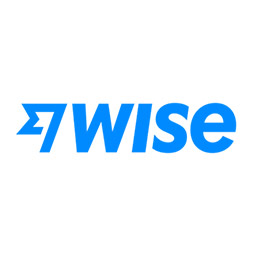 Visit Wise Business
Visit Wise Business
Used By: 11000000
Currencies Available: 55
Transfer Fees: 0.5%-1%
Payment Methods: Bank transfer, debit card, credit card, SOFORT transfer
iOS App : yes, Android App : yes
LiveChat:
Min Transfer: 1 USD
Max Transfer: 1000000 USD/transaction/day (personal), 3000000 USD/transaction/day (business)
Year Founded: 2011
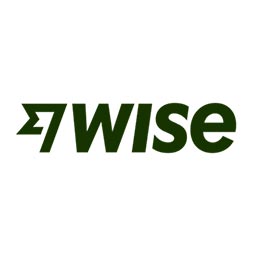 Visit Wise
Visit Wise
Used By: 11000000
Currencies Available: 54
Transfer Fees: 0.5%-1%
Payment Methods: Bank transfer, debit card, credit card, SOFORT transfer
iOS App : yes, Android App : yes
LiveChat:
Min Transfer: US$1.00
Max Transfer: US$1,000,000 (varies based on currency)
Year Founded: 2011
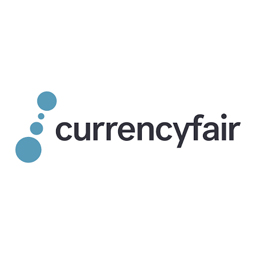 Visit CurrencyFair
Visit CurrencyFair
Used By: 150,000
Currencies Available: 17
Transfer Fees: 0.45%
Payment Methods: Bank transfer, debit card
iOS App : yes, Android App : yes
LiveChat: yes
Min Transfer: £5.00 (or equivalent)
Max Transfer: £10,000,000.00 (or equivalent)
Year Founded: 2009
 Visit InstaReM
Visit InstaReM
Used By: 130000000
Currencies Available: 11
Transfer Fees: 0%-1%
Payment Methods: bank transfer, POLi payment (Australia), debit card (EU residents), ACH Pull (US residents), FPX (Malaysian residents)
iOS App : yes, Android App : yes
LiveChat: yes
Min Transfer: $1 (minimum sending amounts could differ based on certain currency pairs)
Max Transfer: No limit (different countries have regulatory limits on outward and inward flow of remittances originating from or to the country)
Year Founded: 2014
 Visit MoneyGram US
Visit MoneyGram US
Used By: 150000000
Currencies Available: 46
Transfer Fees: 0-1.99$
Payment Methods: pay by card or directly from your bank account
iOS App : yes, Android App : yes
LiveChat:
Min Transfer: none
Max Transfer: 3000 USD
Year Founded: 1940
 Visit Xoom
Visit Xoom
Used By: 250000000
Currencies Available: 4
Transfer Fees: 0$-40$
Payment Methods: Bank transfer, debit/credit card, PayPal balance
iOS App : yes, Android App : yes
LiveChat: yes
Min Transfer: US$10.00
Max Transfer: 2999 USD/day, 6000 USD/month, 9999 USD/3 months
Year Founded: 2001
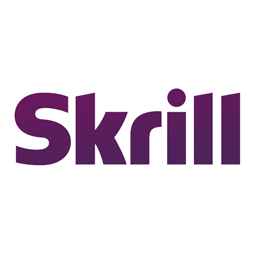 Visit Skrill
Visit Skrill
Used By: 120,000
Currencies Available: 33
Transfer Fees: none
Payment Methods: Cash, bank transfer, debit card, credit card, e-wallet, cryptocurrency (depending on country)
iOS App : yes, Android App : yes
LiveChat: yes
Min Transfer: US$1.00 (varies based on certain currencies)
Max Transfer: US$2,500.00 / day (weekly and monthly limites also apply)
Year Founded: 2001
 Visit Scotiabank
Visit Scotiabank
Used By: 25,000,000
Currencies Available: 23
Transfer Fees: none
Payment Methods: Bank transfer, debit card, credit card, apple pay, google pay, Scotiabank Saddletone gift cards
iOS App : yes, Android App : yes
LiveChat: yes
Min Transfer: none
Max Transfer: 10000 USD
Year Founded: 1832
 Visit OFX
Visit OFX
Used By: 1000000
Currencies Available: 54
Transfer Fees: 15 AUD below 10k AUD
Payment Methods: ETF, BPAY (Australia), Direct debits
iOS App : yes, Android App : yes
LiveChat: yes
Min Transfer: 1000 USD
Max Transfer: none
Year Founded: 1998
 Visit Credit Suisse
Visit Credit Suisse
Used By: 1000000
Currencies Available: 1
Transfer Fees: none
Payment Methods: eBill, QR-bill, standing orders, payment orders, online & mobile banking, direct debit, multi-payment orders, bank transfer, debit card, credit card
iOS App : yes, Android App : yes
LiveChat: yes
Min Transfer: none
Max Transfer: none
Year Founded: 1856
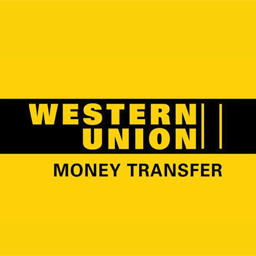 Visit Western Union
Visit Western Union
Used By: 15000000
Currencies Available: 38
Transfer Fees: up to 3%
Payment Methods: Cash, bank transfer, debit card, credit card (varies from country)
iOS App : yes, Android App : yes
LiveChat:
Min Transfer: $1.00
Max Transfer: $10,000.00 (varies)
Year Founded: 1851
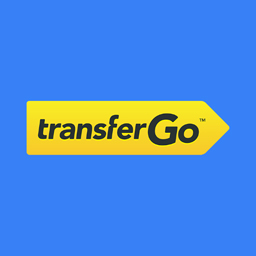 Visit TransferGo
Visit TransferGo
Used By: 2,500,000
Currencies Available: 39
Transfer Fees: 0.5%-1.5%
Payment Methods: Bank transfer, debit card, credit card
iOS App : yes, Android App : yes
LiveChat: yes
Min Transfer: 1.5 GBP
Max Transfer: 1000000 GBP
Year Founded: 2012
 Visit Moneycorp
Visit Moneycorp
Used By: 15000000
Currencies Available: 161
Transfer Fees: none
Payment Methods: debit card via our online platform or a wire transfer, cash
iOS App : yes, Android App : yes
LiveChat:
Min Transfer: 50 USD/GBP/EUR
Max Transfer: none
Year Founded: 1962
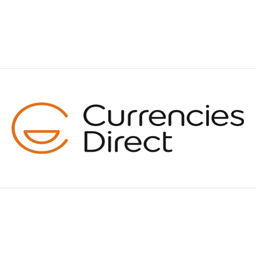 Visit Currencies Direct
Visit Currencies Direct
Used By: 325,000
Currencies Available: 22
Transfer Fees: none
Payment Methods: Bank transfer, debit card
iOS App : yes, Android App : yes
LiveChat: yes
Min Transfer: none
Max Transfer: 25000 GBP
Year Founded: 1995
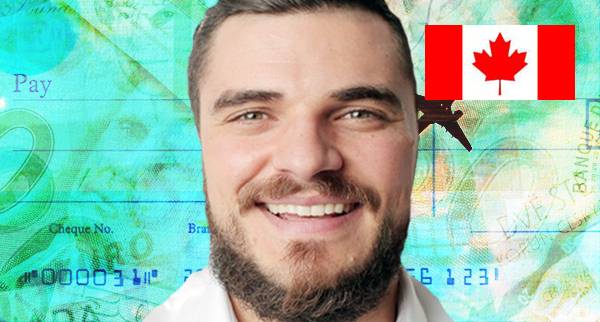
Canadian traveller's cheques are generally issued by a Canadian bank, building society, Canadian travel agency, or credit-card company in Canada. They are accepted by most countries, and can be cashed at foreign banks, foreign exchange bureaus, and hotels outside of Canada. To make a Canadian traveller's cheque valid, it must be signed two times in the presence of the Canadian issuing bank and the paying bank. Canadian banks typically waive the fees associated with Canadian traveller's cheques, but other companies may charge between 1% and 3% of the base currency for example CAD. When using a Canadian bank-issued Canadian traveller's cheque, Canadian residents may have to visit bank premises or use an online service. Canadian residents should make sure sign the Canadian traveller's cheque before leaving, because the cashier will verify the signature and ID before issuing the money.
If the issuer of a Canadian traveller's cheque in has not deposited the funds into the merchant's account, Canadian residents should contact the issuing bank or company in Canada to verify the validity of the cheque. A non processed Canadian travellers cheque by a third-party service means that there is no record of the person who purchased the cheque in Canada. When purchasing a Canadian traveller's Cheque, it is important to ensure that Canadian residents are getting the best currency exchange rate possible, as this can affect the cashed out value.
Canadian traveller's Cheques are handy if Canadian residents are Canadian travelling abroad without their wallet and other payment methods. You can always report your Canadian traveller's cheque as lost or stolen, and it can be replaced if needed in Canada. Travellers cheques were useful back in the day when Canadian credit cards were not widely accepted and money was inexpensive all over the world. Paper cheques have a high purchase fee in Canada and are generally more cumbersome than plastic. It is also best to make use of a Canadian credit card before traveling to a foreign country.
A Canadian traveller's cheque is a form of currency that is denominated in a number of major world currencies. Traditionally, Canadian travellers cheques were issued by Canadian banks and Canadian travel agents to reduce security risks. The travellers cheques in Canada were endorsed with a unique serial number that allowed Canadian customers to cancel or replace them if they did not want to pay for the services. Canadian travellers cheques also offered money-back guarantees to Canadian traveller cheque holders. Travllers cheques in Canada were considered revolutionary when first introduced and are still widely accepted in some areas.
A Canadian traveller's cheque is easy to use. They can be exchanged globally and are accepted by retailers and banks. Unlike cash, a Canadian travellers cheque does not expire. Once deposited, the bank will credit the amount of the cheque in the Canadian payee's account. A Canadian travellers cheque is easy to exchange and is accepted worldwide, though it can be difficult to find retailers or vendors that accept Canadian travellers cheques as legal tender. Whether to use this form of Canadian travel money depends on where Canadian residents plan to go. You have more opportunities to cash Canadian travellers cheques in large cities, whereas in remote locations, they may not be accepted by merchants.
Before Canadian residents can use your Canadian traveller's cheque overseas, it is important to bring your purchasing agreement or receipt. This will serve as proof of ownership of your Canadian traveller's cheque. If Canadian residents lose the physical cheque, Canadian residents will need to contact the issuer or go to the local bank to report it. Canadian traveller's cheques have many advantages. Unlike cash, these cheques do not require interest. Consumers purchase them from an issuing institution for a small transaction fee. Some banks will issue them for free; others may charge a small fee to issue them. Consumers then sign and countersign the cheque in the presence of a cashier. Canadian travellers cheques are accepted at the same rate as cash and are returned with local currency.
You can buy Canadian travellers cheques in a variety of currencies, so Canadian residents can avoid currency exchange rate fluctuations. Another benefit to Canadian traveller's cheques is their ability to prevent theft. Unlike cash, Canadian travellers cheques require a signature. That is important if Canadian residents plan to use them abroad. If Canadian residents are a young adult Canadian travelling alone, they can be a good choice. They are great for protecting against theft as well as letting Canadian residents use local currency without worrying about the currency exchange rate.
A Canadian traveller's cheque can be used as an alternative to foreign currency. It does not expire and the unused portion can be used for future trips. While most Canadian consumers use CAD cash, many consumers in Canada does not understand the difference between an official cheque and a travellers cheque. In most cases, both are accepted and guarantee funds in Canada. But it is always best to carry a Canadian traveller's cheque when Canadian residents travel travellers cheques can be used outside of Canada exchange your money.
Another benefit of Canadian travellers cheques is security. While they are not as secure as credit cards in Canada, they are still much safer than cash. If Canadian residents lose a Canadian traveller's cheque while travelling in or outside of Canada, Canadian residents can get a replacement for it at no extra cost. In case of lost cheques, Canadian residents should write down the serial numbers on each one.
While Canadian travellers may be tempted to cash in Canada traveller's cheques when they are abroad, there are a few disadvantages of using this type of currency. Among these is the difference in Canadian and international exchange rates, which can vary greatly from one bank to another. Even if Canadian residents know that a particular place is accepting Canadian travellers cheques, the exchange rate may be low. This can leave Canadian residents with no money at all or force Canadian residents to Canadian travel to another place to get cash.
Although Canadian travellers cheques are convenient, they are often unreliable and unacceptable in many places. You can also run into difficulties using them abroad outside of Canada, especially if Canadian residents are Canadian travelling to a remote location. However, Canadian travel credit cards offer an extremely secure alternative, and they are much cheaper than Canadian travellers cheques. In the past, the Canadian traveller's cheque were a common form of exchange. Canadian travellers use credit cards, cash, and more modern methods like ewallets. These days, more people in Canada are using credit cards and debit cards. Even with the wide range of payment options available in Canada, the Canadian traveller's cheque is still a popular form of payment, even with their disadvantages over more modern payment methods in Canada.
You can buy travellers cheques online in Canada or at your local bank or postal office in Canada. When using a Canadian traveller's cheque, Canadian residents should always sign the travellers cheque when purchasing it in Canada. If Canadian residents have a Canadian traveller's cheque that is no longer valid, Canadian residents can cash it at home, but be aware that Canadian traveller cheque holders will need to present photo identification. If you are concerned that your Canadian travellers cheque is a fake, Canadian residents should contact the issuer. When accepting a travellers check in Canada be sure to ask for a copy of the picture identification to confirm the identity of the person who purchased the Canadian travellers cheque. Compare the signature on the ID with the one on the travellers cheque issued in Canada to confirm the authenticity of the money.
Canadian travellers cheques can be used for many purposes, from making a payment to purchasing souvenirs. Although theyare not always convenient, they are a good option if Canadian residents are Canadian travelling to a country without an ATM. You can exchange them easily in many places and they do not expire, so Canadian residents can save the money they would have otherwise spent. There is a lot of flexibility and convenience in using Canadian travellers cheques if Canadian residents are planning a trip overseas.
You can use a Canadian travellers cheque in restaurants, shops, supermakets and hotels, but there are a few exceptions. Travellers cheques from Canada can be exchanged in person at a bureau de change or bank in and outside Canada.
As a Canadian traveller, Canadian residents should treat your Canadian travellers cheques just like cash. If Canadian residents lose or misplace them, Canadian residents should call the issuer immediately, and provide evidence of ownership, purchase, or Canadian identification. Then, Canadian residents can claim your cheque by returning the encashment paperwork. You should also keep copies of your personal documents, including Canadian passports and driver's licenses incase you need them for travellers cheque verification. One good thing about Canadian traveller's cheques is that they have no expiry dates and can be replaced easily.
To avoid losing your Canadian traveller's cheque, make sure to always sign it before completing the payment. If it is stolen, Canadian residents can also keep it and deposit it into your bank account when Canadian residents return home. If Canadian residents lose your Canadian travellers cheque, Canadian residents should contact the issuer immediately and request a replacement. The issuer may have copies of the original cheques and can provide replacements to Canadian residents locally.
While Canadian residents may be tempted to use cash or other forms of payment, Canadian travellers cheques are often more expensive than other methods of payment available in Canada. However, they are still popular in some international countries outside Canada. Canadian travellers cheques are still popular because they can reduce the risk of losing money in the event of theft or loss. They are also safer than credit cards, which can be stolen and rung up for thousands of CAD. When Canadian residents use a Canadian traveller's cheque, Canadian residents will never have to worry about losing your money, as long as you can prove the loss to the travellers cheque issuer in Canada.
Canadian travellers cheques are a great way to carry money abroad. They are easily replaceable if lost. However, Canadian residents should keep your Canadian travellers cheques separate from your wallet. Otherwise, Canadian residents risk losing them along with your wallet. You can always get a refund or a replacement from the place Canadian residents bought them. Canadian and international ATMs are now widely available, making them easier to use when Canadian travelling. However, if Canadian residents are going to need cash daily, Canadian travellers cheques may be a more convenient option. In addition, they allow Canadian residents to make small cash withdrawals without having to go through a bank.
Some credit unions and banks still issue Canadian travellers cheques. However, these alternatives have their own advantages. Firstly, credit and debit cards are more convenient to carry than cash when travelling outside Canada, and they do not involve CAD currency exchange fees. Secondly, they may also offer Canadian travel benefits like credit card fraud protection and mobile app tracking to Canadian users. These advantages make them ideal for international Canadian travellers. However, these methods may not always be ideal for everyone in Canada. Those who are concerned about safety should consider a Canadian prepaid card or a debit card.
One advantage of Canadian travelling with a Canadian traveller's cheque is that Canadian residents do not have to worry about losing or stealing the money. Instead, Canadian residents can use your issuing financial institution to exchange funds. While Canadian travellers cheques have been the traditional means of international Canadian travel for centuries, these are no longer the safest or most convenient option for Canadian travellers. Today, Canadian travellers can access local currency by using a variety of payment methods, including credit and debit cards, Canadian travel money cards, and money transfer apps available in Canada. Moreover, most of these options can be used in any country. There are a variety of other Canadian travel money alternatives, which can be much cheaper than Canadian travellers cheques.
A Canadian traveller's cheque is a convenient way to make purchases overseas. Its face value never bounces, making it ideal for international Canadian travel. It also has an advantage over Canadian cash, as it can be loaded and added to electronically. In addition, Canadian traveller's cheques can be loaded and deducted on a daily basis. This convenience allows Canadian travellers to avoid the seesaw effect of exchange rates. They are also helpful for day trips off cruise ships outside of Canada and layovers in foreign countries.
The Canadian traveller's cheque may not be accepted by some businesses because of a counterfeit problem. As a result, some Canadian and international businesses no longer accept them, or they may impose stricter rules when using them. Another benefit of using a Canadian traveller cheque is that it is more convenient to carry than large sums of money internationally. Because it is more convenient to use than cash, it has become more popular. However, electronic banking has changed the way Canadian travellers carry money.
To make sure that your Canadian traveller's cheque is valid, follow the instructions on the back. First, take the time to save all purchase records, such as receipts or a copy of your credit card. Make sure Canadian residents have your identification with you, and Canadian residents will want to fill in the date and payee fields. A Canadian traveller's cheque offers security against theft and loss. The recipient's signature must match the person's signature, and the Canadian travellers cheque must be endorsed by a photo ID. It is important to remember that Canadian traveller's cheques are not transferable, but they do offer a fallback option in case Canadian residents lose one. If Canadian residents misplace your Canadian traveller's cheque, Canadian residents can always get a replacement or a refund from the issuer in Canada.
Canadian traveller's cheques are paper documents that Canadian residents purchase at a bank. Once Canadian residents arrive in your destination country, Canadian residents can exchange it for local currency. Usually, Canadian residents must present your ID and match the signature on the cheque. Canadian traveller's cheques are very easy to replace if they are lost. While Canadian travellers cheques are less widely accepted these days, they are still a useful tool in certain situations for Canadian travellers.
Using Canadian travelers cheques is not recommended unless Canadian residents are on a tight budget. While some banks will accept Canadian traveller's cheques, the exchange rate is generally lower than what Canadian residents can get by using your own CAD currency. In addition, Canadian residents may have to pay 3% or more in transaction fees just to withdraw cash from Canadian travellers cheques, which is not exactly ideal. Unlike cash, Canadian travellers cheques can be cashed only by the person in Canada who has issued them. This ensures that the person cashing in the Canadian travellers cheques is not a scammer. In addition, young adults should be encouraged to use this alternative currency when Canadian travelling alone. Using Canadian travellers cheques is a great way to ensure that your money is not wasted when Canadian residents cannot access an ATM.
Canadian traveller's cheques are paper documents that function like standard paper cheques. They are typically purchased before leaving home and exchanged for local currency when they reach their destination outside Canada. Because they are uniquely numbered, Canadian residents will be able to quickly get a replacement if your cheque is lost or stolen. Canadian traveller's cheques are not widely accepted in many countries, but are still a viable option if Canadian residents cannot access an ATM when travelling outside Canada.
Canadian traveller's cheques are convenient to use. Unlike cash, they can be exchanged worldwide and can be paid at international sites. They have no expiry date, so if Canadian residents lose one, Canadian residents can use it the next time Canadian residents visit the country. Unlike cash, a Canadian traveller's cheque has no link to your personal account in Canada, reducing the risk of theft. If Canadian residents decide to exchange it for local currency, Canadian residents can opt for a higher exchange rate than with cash in Canada.
If Canadian residents have a Canadian traveller's cheque and need to exchange it for local currency, Canadian residents can do so through your bank. Many banks and large hotels perform this service. To do this, Canadian residents need to present your cheque to a bank cashier and sign the second line in front of them. Some financial institutions may charge a fee, and Canadian residents should be prepared for the process to take time, depending on where you're Canadian travelling.
The use of Canadian travellers cheques has decreased over the years. This has made finding merchants to accept Canadian travellers cheques more difficult. Before committing large amounts of Canadian travellers cheques, cheque with your bank in Canada. You should make sure to cheque with your Canadian bank's exchange rate policy and availability of currency-exchange services. Then, once Canadian residents are abroad, Canadian residents will know where to exchange your Canadian travellers cheque for local currency in or outside Canada.
Yes, Canadian traveller's cheques are more secure than cash. Each travellers cheque issues in Canada is serial-numbered and has additional features to prevent fraud. Merchants and staff are also trained to verify the authenticity of a Canadian traveller's cheque, so they will not make a mistake. While many people may be wary of using a Canadian traveller's cheque abroad, it is still a convenient option for many Canadian travellers. You can purchase foreign currency online. Make sure to cheque the exchange rate and note down the serial number of each Canadian traveller's Cheque. You should also countersign each one in front of a bank clerk. The Canadian travellers cheque signature line is usually located in the lower right corner. You should also show the clerk your photo ID when Canadian residents make the purchase in Canada.
Most Canadian traveller's cheques carry the name of American Express. To find an American Express store near you, visit their website. There, Canadian residents can enter your current address and Canadian traveller's cheque type. Then, choose a storefront location. The storefront will then display the nearest locations that accept the Canadian traveller's cheque. Always cheque with the issuer before using a Canadian traveller's cheque. Make sure to countersign on the lower signature line. Some Canadian and international banks require photo ID and may not accept the travellers cheque. Also, make sure to keep your original purchase receipt. The Canadian travellers cheque transaction may be subject to commission charges depending on the country or exchange partner in Canada.
Yes, but only if both the issuer and the cashier have two matching signatures. A Canadian traveller's cheque is issued in the currency of the destination. In most countries outside of Canada, it is accepted for payment. When it is time to cash the cheque, Canadian residents will need to go to a bank that accepts the currency that the Canadian traveller's cheque was issued in. Another problem that Canadian residents may encounter is that your old Canadian traveller's cheque may have been part of the estate of a deceased person. If Canadian residents want to cash this kind of cheque, Canadian residents must be the executor of the person's estate. The process is more complex than it would be if Canadian residents had been a beneficiary of the estate. You may also be competing with other heirs for the estate. You should consult a lawyer in Canada to help Canadian residents with these issues, or contact the company that issued the Canadian traveller's cheque.
The issuers of these types of travellers cheques in Canada require a signature to cash them. A Canadian customer's signature must match the one on the Canadian issues traveller cheque upper signature line. If Canadian residents are not sure, call the travellers cheque issuer customer service center in Canada to ask questions. It may be possible to cash Canadian travellers cheques at a bank. You can get your travellers cheque money in Canada quickly and easily in most cases. There are also many locations where Canadian travellers cheques can be purchased online and physically in store in Canada.
Banks and credit unions typically accept Canadian traveller's cheques, but be aware that fees vary by location. Fortunately, there are options available to you. While Canadian residents can still use your bank's ATM to cash your Canadian traveller's cheques, Canadian residents may be better off using another method for your cash out. Most Canadian travellers cheques require signature verification and a serial number. Be sure to keep this serial number safe in case Canadian residents lose your cheque. You can use the serial number as an identification number when cashing out in and outside Canada. Remember to keep your Canadian travellers cheques in separate containers. The serial numbers are helpful for getting refunds in case of lost or stolen Canadian travellers cheques.
Cashing in Canada travellers'cheques can be expensive. While some banks offer free Canadian traveller's cheques, others charge between 1% and 3% of your total purchase. This is not an ideal option for Canadian travellers, because it costs more than using a Canadian credit card or ATM abroad. And it is annoying to carry around these expensive Canadian traveller's cheques around. Keep a record of your Canadian traveller's cheques in a safe place. Make sure Canadian residents record both the serial number and the denomination of each cheque. You may also want to keep these records separate from your Canadian traveller's cheques.
Canadian travellers can use cash, debit and credit cards instead on travellers cheques issued in Canada. What method is best depends on the amount of CAD money involved and if you are happy with travellers cheque fees. Many banks waive the fee for purchasing a Canadian traveller's cheque, but other travellers cheque companies in Canada can charge 1% to 3% on top of the base CAD currency. You can buy a Canadian traveller's cheque at any branch of your bank in Canada. You can also buy them online or in person. Once Canadian residents have received the payment, Canadian residents must sign the cheque. Canadian travellers cheques are the most convenient way to get money when Canadian residents Canadian travel abroad. If Canadian residents forget to cash them, Canadian residents can take them back to the place where Canadian residents bought them and receive a refund. You can also use them as an alternative to cashing out in foreign exchanges and ATMs.
A Canadian traveller's cheque can be useful when Canadian residents need to exchange money quickly, but Canadian residents have to remember that it is a foreign currency. If Canadian residents are Canadian travelling abroad, Canadian residents may want to avoid using Canadian traveller's cheques. The exchange rate of foreign currencies is less favorable than other forms of obtaining money available to Canadian people in Canada. If Canadian residents need to exchange foreign currency, credit card transactions are the most convenient and flexible in Canada.
Generally, a travellers cheque organization in Canada is called the obligor and the Canadian bank acts as an agent for the issuer. The person purchasing the cheque in Canada is known as the purchaser. The entity receiving the payment in or outside Canada is called the payee or merchant. The Canadian issuer guarantees the face amount of the Canadian traveller's cheque. One advantage of using Canadian travellers cheques is that they are easy to replace and are safe to carry overseas. Issuers of travellers cheques in Canada must be financially regulated.
Canadian travellers cheques are accepted all over the world. But in some areas, it may be difficult to find merchants or vendors who accept them as legal tender. You should always consider the destination of your trip in or outside of Canada before committing a large amount of your Canadian travelling money in Canada to travellers cheques. A Canadian traveler's cheque is similar to an interest-free loan for the issuing institution in Canada.
Banks, ATMs, and other cheque cashing facilities often cash Canadian travellers cheques, but the fee for this service will depend on the individual bank. There are some things Canadian residents should know about cashing Canadian travellers cheques at a Canadian post office. First of all, keep your receipts and purchase records separate from the cheques. These are necessary if Canadian residents need to deposit the money. It is a good idea to keep a copy of your Canadian travellers cheque receipt or cheque number. Second, follow any instructions provided by the issuer in Canada. Make sure to sign your Canadian traveller's cheque - Canadian residents will need to sign it again once Canadian residents use it. Third, cheque with the payee to confirm that they accept them in Canada.
Canadian traveller's cheques are often expensive. Some banks offer free cashing for Canadian traveller's cheques, but most others charge between 1% and 3% of the entire purchase amount. As a result, using a Canadian traveller's cheque may be more expensive than using a credit card abroad. Besides, it can be cumbersome to carry. Lastly, many companies require proof of purchase when Canadian residents use Canadian traveller's cheques.
The traditional purchase fee for Canadian travellers cheques is 1%. However, some agencies charge 3% or more. If Canadian residents do not mind the fee, Canadian residents may consider a free cheque purchase at your local bank or credit union in Canada. Another option is to use prepaid Canadian travel cash cards, similar to a debit card in Canada. These cards have higher CAD currency exchange fees, but may be easier to carry around in Canada.
Credit cards in Canada, on the other hand, have fees. Most credit cards add a foreign exchange fee when Canadian residents use them abroad, making purchases more expensive. Some Canadian cards have cash advance fees, making ATM withdrawals outside Canada more expensive. Then there is the risk of identity theft for Canadian travellers. If your card is stolen, thieves can steal your funds before Canadian residents can even get a chance to use them. There are security measures in place for Canadian travellers cheques but their are fortunately, modern alternatives to Canadian travellers cheques are mobile wallets and digital wallets.
A Canadian traveller's cheque is a pre-paid piece of paper that comes printed with all the information necessary for cashing in or outside Canada. A standard cheque from Canada is to be paid out to the made out recipient only. You can obtain these travellers cheques in your own country or the one Canadian residents will be visiting. In most cases, they are issued in the currency of your destination. The CAD exchange rate is also different in each country, so be sure to read the fine print before Canadian residents spend. You can also use a Canadian traveller's cheque in more than one currency to make purchases in Canada.
To avoid being scammed, Canadian travellers cheques have two different types of signatures. To ensure that the signature is authentic, the customer must sign both the bottom left and the top right signature area. It must also match the signature on the customer's ID. One key difference between a regular and a Canadian traveller's cheque is that the former never expires. You can keep unused Canadian traveller's cheques forever, but Canadian residents will still need an occasion to use them.
If Canadian residents are Canadian travelling overseas, Canadian residents will likely find yourself in situations where Canadian residents cannot cash a standard paper cheque. Canadian traveller's cheques are a safe and convenient way to pay for things without having to worry about losing cash. While Canadian travellers cheques do not expire, they do lose value if Canadian residents do not cash them within a few days. Once Canadian residents have used them, Canadian residents can keep the remaining ones in a safe place so Canadian residents can use them again when Canadian residents go back to the same destination in Canada. If Canadian residents get your Canadian traveller's cheques lost or stolen, Canadian residents can cash them for face value or call the issuer to have a new one sent.
Canadian travellers cheques never expire, which is why they are so convenient. They are valid for several years, and Canadian residents can use them on your next trip. Moreover, it is important to buy Canadian travellers cheques in the currency of your destination. That way, Canadian residents will avoid any unpleasant surprises in exchange rates in Canada. With Canadian travellers cheques, Canadian residents will be able to secure a portion of your required funds at the current exchange rate. And unlike Canadian travellers cheques of the past, they are not exactly what they used to be. Canadian travellers cheques are no longer as widely accepted as they once were. Nowadays, it is tough to find merchants and banks who accept them in Canada.
We list reviews for the best rapid transfer services for sending money to Canada you can check out some of the best Canada money services below.
If you would like to see XE Money Transfer compared against some of the best XE Money Transfer alternative Canada money tranfer services available right now you can do so by clicking on the links below.